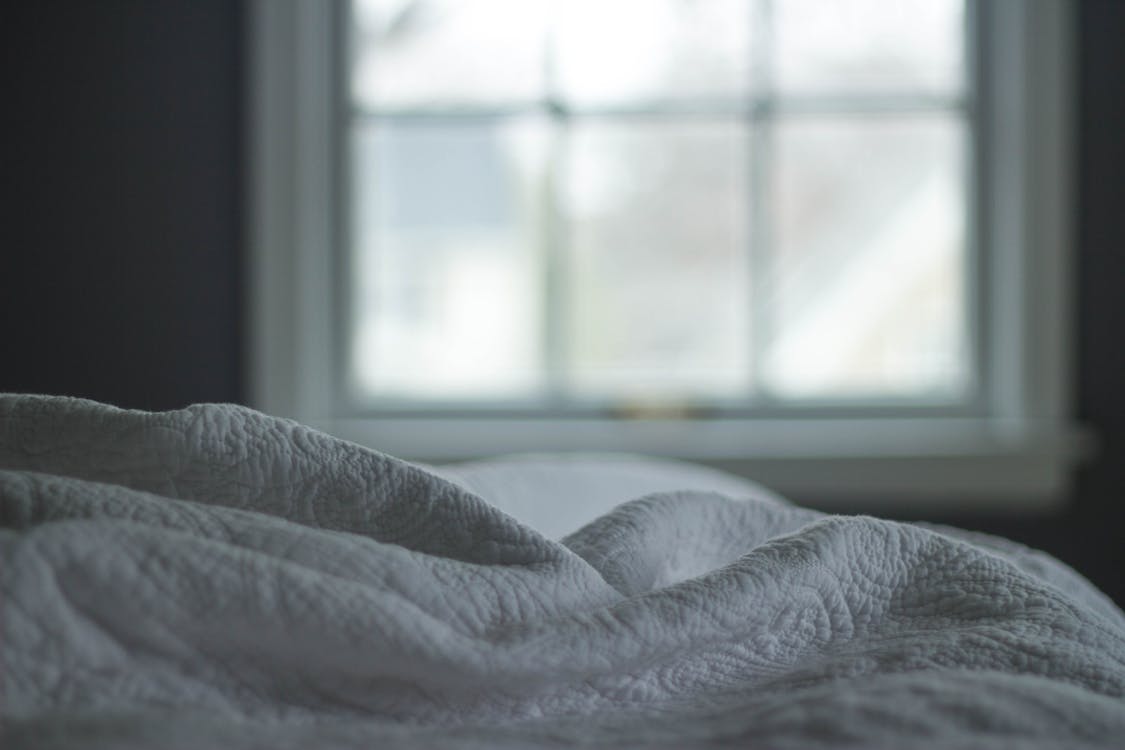While CPAP machines are most often associated with sleep apnea, they have also been found to help individuals diagnosed with chronic obstructive pulmonary disease, or COPD. COPD is a serious respiratory issue that is one of the leading causes of death in the United States.
Needless to say, managing COPD should be a top priority for anyone who has been diagnosed with this condition — especially if their COPD overlaps with obstructive sleep apnea. Here is what you should know.
What is COPD?
 COPD isn’t a single disease — it is a term used to describe several different chronic inflammatory lung conditions. The most common contributing conditions to COPD are chronic bronchitis and emphysema. Individuals with COPD often suffer from both conditions. These in turn typically result from long-term exposure to cigarette smoke or other airborne particulates. The COPD Foundation notes that while genetics, asthma, and air pollution can contribute to COPD, smoking is the most common culprit.
COPD isn’t a single disease — it is a term used to describe several different chronic inflammatory lung conditions. The most common contributing conditions to COPD are chronic bronchitis and emphysema. Individuals with COPD often suffer from both conditions. These in turn typically result from long-term exposure to cigarette smoke or other airborne particulates. The COPD Foundation notes that while genetics, asthma, and air pollution can contribute to COPD, smoking is the most common culprit.
Regardless of the root cause, however, all COPD has the same overall effect of obstructing the lungs’ airflow. Bronchitis inflames and narrows the bronchial tubes. Emphysema destroys the lungs’ air sacs. These issues cause mucus buildup and limit the normal flow of air in and out of the lungs.
As the National Heart, Lung and Blood Institute explains, “COPD is a major cause of disability, and it is the fourth leading cause of death in the United States. Currently, 16 million people are diagnosed with COPD. Many more people may have the disease and not even know it. COPD develops slowly. Symptoms often worsen over time and can limit your ability to do routine activities. Severe COPD may prevent you from doing even basic activities like walking, cooking, or taking care of yourself.”
One of the most concerning elements of COPD is that there is no cure or permanent treatment. The best you can do is manage symptoms to keep the disease from getting worse. Left untreated, COPD will greatly reduce quality of life and increase the risk of heart disease, lung cancer, depression, and other respiratory illnesses.
Common Symptoms to Watch Out For
 In its early stages, COPD is often asymptomatic, or it could be mistaken for a common cold. Individuals will experience a mild, recurring cough and need to clear their throat more often than usual. Shortness of breath may become more severe, particularly after exercising, which often causes people to begin reducing their physical activity.
In its early stages, COPD is often asymptomatic, or it could be mistaken for a common cold. Individuals will experience a mild, recurring cough and need to clear their throat more often than usual. Shortness of breath may become more severe, particularly after exercising, which often causes people to begin reducing their physical activity.
As the condition worsens, shortness of breath becomes more severe, leaving individuals feeling out of breath after even mild physical exertion. A feeling of tightness in the chest, a lack of energy, and increased susceptibility to colds or the flu are also common. Most individuals also begin developing a chronic cough, which often coincides with needing to clear mucus from the lungs.
COPD can eventually result in chronic fatigue, weight loss, and swelling of the feet and ankles. Sometimes, the lack of oxygen stemming from COPD will get so bad that it requires immediate medical attention. Fingernails and lips will turn blue, and the patient may feel so confused or faint that they cannot even speak.
Prevention and Diagnosis
 Because of the strong link between COPD and smoking, quitting smoking or finding ways to limit your exposure to secondhand smoke are the most important things you can do to lower your risk. As hard as it may be to quit, few things can make a bigger difference for your overall health. Quitting smoking not only decreases your risk for COPD; it also lowers your risk for heart disease, lung cancer, and other deadly complications.
Because of the strong link between COPD and smoking, quitting smoking or finding ways to limit your exposure to secondhand smoke are the most important things you can do to lower your risk. As hard as it may be to quit, few things can make a bigger difference for your overall health. Quitting smoking not only decreases your risk for COPD; it also lowers your risk for heart disease, lung cancer, and other deadly complications.
Working or living in an area with poor ventilation and high levels of airborne particulates can also increase your risk, and as such, you should attempt to mitigate these situations in whatever way possible. For example, if you work in an area with chemical fumes, heavy dust, or other airborne pollutants, you may want to coordinate with your employer to ensure that you have N95 masks or other protective equipment available to reduce your risk.
Individuals at risk for COPD should also follow vaccination guidelines for the flu and pneumococcal pneumonia to reduce their risk of additional respiratory infections.
If you are concerned about your breathing and overall health, it is best to visit a doctor to discuss your concerns regarding COPD. COPD is generally diagnosed based on the results of a physical exam and diagnostic testing, as well as the symptoms you report to your doctor. As part of this visit, you should discuss all potential risk factors that apply to you, including whether you have asthma or family members who have been diagnosed with COPD.
Depending on the results of your initial visit, your doctor may recommend additional tests to measure lung function and blood oxygen levels. CT scans or X-rays may also be performed.
What Happens When You Have COPD and Sleep Apnea?
 For someone with both COPD and sleep apnea, breathing normally becomes an ongoing struggle. COPD primarily affects breathing during the day, particularly when trying to participate in any physically demanding activities. Obstructive sleep apnea (OSA) causes disruptions to breathing during the night when the upper airway collapses and cuts off the flow of oxygen.
For someone with both COPD and sleep apnea, breathing normally becomes an ongoing struggle. COPD primarily affects breathing during the day, particularly when trying to participate in any physically demanding activities. Obstructive sleep apnea (OSA) causes disruptions to breathing during the night when the upper airway collapses and cuts off the flow of oxygen.
Individuals with both conditions experience trouble breathing both day and night, causing serious issues with blood chemistry and blood oxygen levels. This is known as Overlap Syndrome.
As the American sleep Apnea Association explains, “Studies have shown a prevalence of both OSA in those with COPD measuring between 11 and 19 percent of those who participated in research. Almost half of all people who have COPD experience some challenges with breathing while asleep, even if they don’t have full-fledged OSA. People with COPD tend to have reduced levels of blood oxygen all day long, even while they are alert and breathing. When they fall asleep, obstructions to their airways caused by OSA can radically reduce these already reduced levels. This could be life threatening, depending upon severity.”
Like COPD, smoking is a known contributor to obstructive sleep apnea, and sleep apnea can increase the risk for high blood pressure, heart disease, and other serious medical conditions. When Overlap Syndrome occurs, an individual’s risk for severe and costly health complications, as well as a reduced quality of life, become much greater.
Patients with COPD who complain of trouble sleeping should generally undergo an overnight sleep study. This gives medical professionals the opportunity to determine if they are suffering from sleep apnea, and to see just how severe the condition is. A diagnosis of obstructive sleep apnea will result in further lifestyle changes and treatments to improve the body’s flow of oxygen.
How a CPAP Machine Can Help
 Both COPD and sleep apnea must be managed carefully to prevent even more severe health outcomes. One of the best things individuals with Overlap Syndrome can do is use a CPAP or BiPAP machine. Indeed, supplemental oxygen is already recommended as a treatment option for individuals with COPD and severe hypoxemia. By helping the body receive enough oxygen, mortality rates are lowered and it becomes easier to continue participating in normal activities.
Both COPD and sleep apnea must be managed carefully to prevent even more severe health outcomes. One of the best things individuals with Overlap Syndrome can do is use a CPAP or BiPAP machine. Indeed, supplemental oxygen is already recommended as a treatment option for individuals with COPD and severe hypoxemia. By helping the body receive enough oxygen, mortality rates are lowered and it becomes easier to continue participating in normal activities.
A CPAP machine ensures that your body receives a steady flow of oxygen throughout the night. The delivery of pressurized air keeps your respiratory passages from closing, so that you can sleep soundly through the night. It helps your body maintain healthy blood oxygen levels, which will minimize the potential complications from daytime COPD.
As Healthline reports, “Benefits of CPAP therapy include better heart health, lower stroke risk, and improved alertness during the day…According to a study in the Journal of Clinical Sleep Medicine, another benefit of CPAP therapy is a lower risk of mortality in people who have COPD and sleep apnea. The researchers found that people with both conditions who used CPAP for more than two hours a night tended to live longer than those who used the therapy for fewer than two hours a night. Researchers also noted that CPAP was especially beneficial to people with COPD who were already on long-term oxygen therapy.”
Of course, a CPAP machine alone isn’t going to help address Overlap Syndrome. Many patients can improve their sleep quality by adjusting their sleep position (as sleep apnea tends to be worse when you sleep on your back). Obese individuals can reduce the severity of their sleep apnea by losing weight through healthy diet and exercise.
As with COPD itself, quitting smoking can also reduce the severity of sleep apnea. By pairing healthy lifestyle changes with the use of a CPAP machine and other supplemental oxygen therapy, you can mitigate the influence of Overlap Syndrome on your daily life.
A Note on COVID-19
 The COVID-19 pandemic has significantly interrupted our normal way of life — and this is especially true of individuals who are at a higher risk of severe complications from the disease. While someone with COPD or sleep apnea is not more likely to get the disease, they are more likely than others to experience a severe infection because of their pre-existing respiratory condition.
The COVID-19 pandemic has significantly interrupted our normal way of life — and this is especially true of individuals who are at a higher risk of severe complications from the disease. While someone with COPD or sleep apnea is not more likely to get the disease, they are more likely than others to experience a severe infection because of their pre-existing respiratory condition.
Because there is not yet a treatment for COVID-19, individuals who are already dealing with Overlap Syndrome should exercise extreme caution to lower their risk. Try to avoid going out, except for necessary medical visits or purchasing groceries or other necessary supplies. Wear a face mask in public, and maintain social distancing from others. Avoid touching your face, wash your hands regularly, and clean frequently used surfaces inside your home.
If someone in your household is diagnosed with COVID-19, you should stay in a separate part of the home to lower your risk. There is some concern that using a CPAP machine could actually help spread the virus in the air, which makes sleeping in a separate room an absolute must in such circumstances.
If you yourself contract COVID-19, contact your doctor. They can advise you about what you should do next, including how you should use your oxygen therapy. If symptoms get severe (such as difficulty breathing or persistent chest pain), do not hesitate to seek emergency medical help.
Ensuring a Healthier Future
While COPD does not have a cure, it can be controlled. By using a CPAP or BiPAP machine and following other recommendations from your doctor, you can control your symptoms and prevent more serious lung damage.
If purchasing the CPAP equipment that you need for COPD or sleep apnea seems to be more than you can afford, check out the many options we have available at Help Medical Supplies. We offer CPAP and BiPAP machines from leading manufacturers at discounted prices, including in bundle packages that combine extra tubing, filters, masks, and other essential equipment.
We also offer free shipping on all orders over $89, and financing is available through CareCredit for qualifying purchases over $500.
A lack of insurance coverage shouldn’t keep you from being able to get the equipment needed to manage COPD or sleep apnea. By using a CPAP device, you can have a healthier future that gives you more time to be with the people you love.

